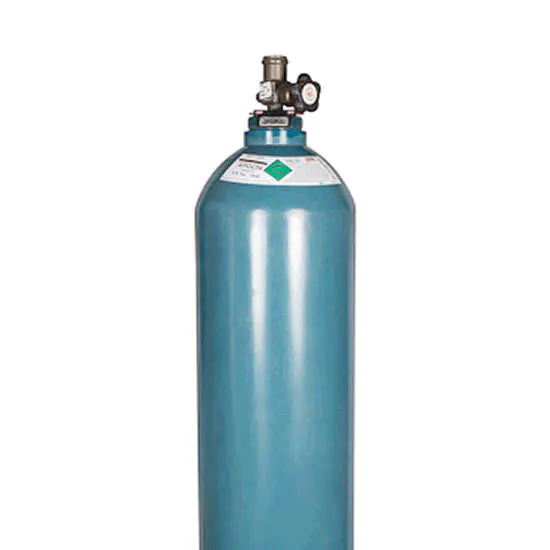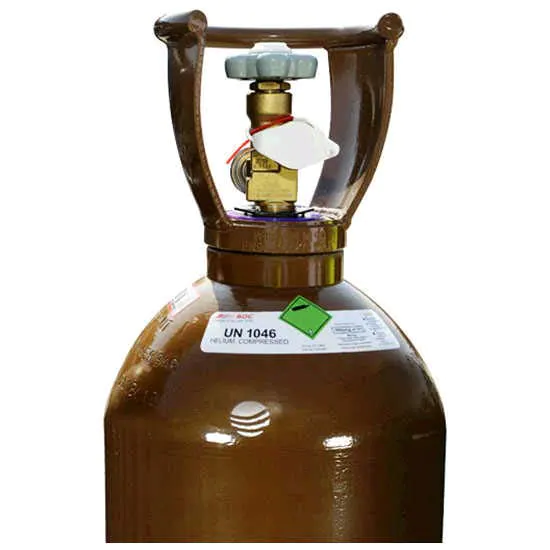$930.61
Key Features:
Argon N6.0 (N6.0 Grade Ar) gas cylinder. features 200 Bar Cylinder Pressure Options, Multiple cylinder size options available, Speciality gas.. Pure gases are classified by grade. The first digit of the Argon grade classification indicates the ‘number of nines’ purity, e.g. N3.0 = 99.9% purity.The second digit is the number following the last nine, e.g. N4.6 helium has a guaranteed minimum purity level of 99.996%.
| Argon Grade | Argon Minimum purity | Argon Total impurities |
|---|---|---|
| N2.0 | 99% | 1% |
| N3.0 | 99.9% | 1000ppm |
| N4.0 | 99.99% | 100vpm |
| N5.0 | 99.999% | 10vpm |
| N6.0 | 99.9999% | 1vpm |
| N7.0 | 99.99999% | 100vpb |
A refrigerant is a working fluid used in the refrigeration cycle of air conditioning systems and heat pumps where in most cases, they undergo a repeated phase transition from a liquid to a gas and back again. Refrigerants are heavily regulated due to their toxicity, flammability and the contribution of CFC and HCFC refrigerants to ozone depletion and the contribution of HFC refrigerants to climate change.
Refrigerants are used in a direct expansion (DX) system to transfer energy from one environment to another, typically from inside a building to outside (or vice versa), commonly known as an “air conditioner” or “heat pump”. Refrigerants can carry 10 times more energy per kilogram than water and 50 times more than air.
In some countries, refrigerants are controlled substances due to high pressures (700–1,000 kPa (100–150 psi)), extreme temperatures (−50 °C [−58 °F] to over 100 °C [212 °F]), flammability (A1 class non-flammable, A2/A2L class flammable and A3 class extremely flammable/explosive) and toxicity (B1-low, B2-medium & B3-high), as classified by ISO 817 & ASHRAE 34.
Refrigerants must only be handled by qualified/certified engineers to the relevant classes of refrigerant (in the UK, C&G 2079 for A1-class, amd C&G 6187-2 for A2/A2L & A3 class refrigerants).
A refrigerant needs to have: a boiling point that is somewhat below the target temperature (although boiling point can be adjusted by adjusting the pressure appropriately), a high heat of vaporization, a moderate density in liquid form, a relatively high density in gaseous form (which can also be adjusted by setting pressure appropriately), and a high critical temperature. Extremely high pressure should be avoided.[citation needed]
The ideal refrigerant would be: non-corrosive, non-toxic, non-flammable, with no ozone depletion and global warming potential. It should preferably be natural, well-studied and have a low environmental impact. Newer refrigerants address the issue of the damage that CFCs cause to the ozone layer and the contribution that HCFCs make to climate change, but some do raise issues relating to toxicity and/or flammability.
By 1930, refrigeration companies understood that natural refrigerants were never going to allow them to expand refrigeration to homes and small businesses. In other words, apart from the high toxicity and corrosiveness of almost all natural refrigerants, their characteristics did not allow compact equipment to be built. Consequently, thanks to great research and development efforts, the first synthetic refrigerants emerged.
At the time, these new coolants were the closest thing to the ideal coolant. In this way, dichlorodifluoromethane (CCl2F2) was created, which is also known in the ASHRAE standard as R-12. However, over the years, it was determined that fluorocarbon-based refrigerants were damaging the ozone layer and contributing to global warming. Consequently, in the Montreal Protocol (1986), its replacement was agreed upon at the global level.
R-12 was replaced by chlorodifluoromethane (HCFC), which is also known as R-22. However, this synthetic refrigerant gas was quickly replaced by a new generation of HFC (hydrofluorocarbon) gases, which cause less harmful effects on the environment.
R-134a, one of the most used HFC gases today: This HFC refrigerant has zero ozone depletion potential (ODP). On the other hand, the global warming potential (GWP) is 1430. When R-134a is used in compressors designed for R-12, mineral oil must be replaced by synthetic oil based on polyester (POE).
R-134a can in turn be replaced by a more modern gas based on hydrofluoro olefins (R-513A). This state-of-the-art refrigerant gas has a GWP of 630, which is much lower than that of R 134a.
R-152a for industrial refrigeration: R-152a is a difluoroethane-based refrigerant gas, which has a GWP of 124 and does not destroy the ozone layer. This refrigerant has thermodynamic properties superior to R-134a and is widely used in chiller-type refrigeration systems.
| Certificate Type | Certified, Uncertified |
|---|











Reviews
There are no reviews yet.